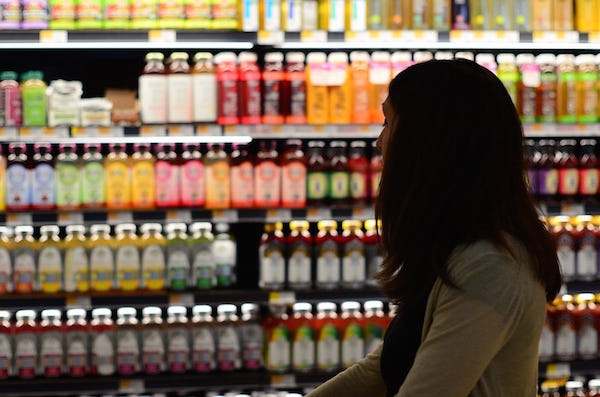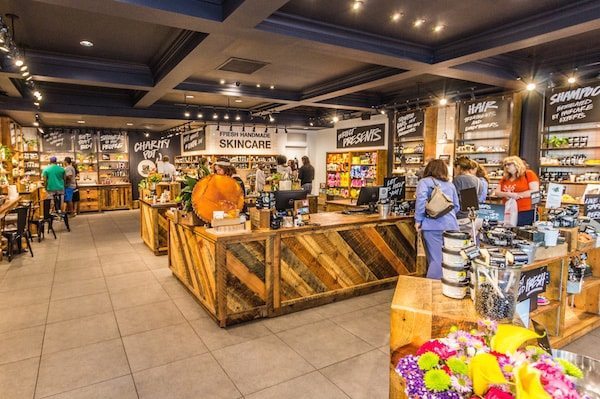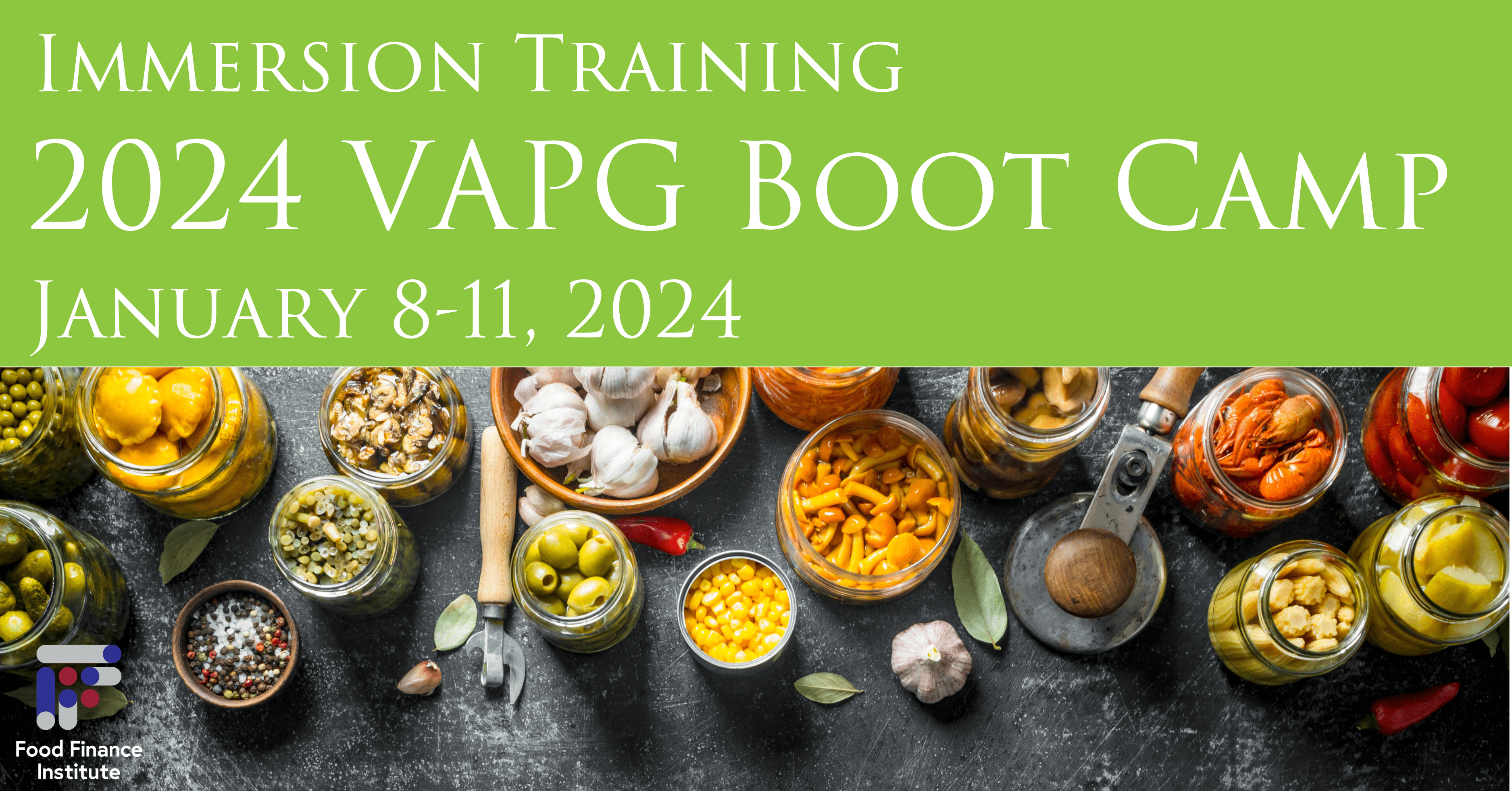Getting proper financing for growing food businesses is one of the most challenging obstacles food business owners face. This is due in large part to the high bar for fundraising and financial communication when growing a food business. And, there are often many sources of capital that need to be brought together to adequately fund the growth of these food businesses. This food funding ecosystem is diverse, with many funders having differing expectations about business outcomes and the business owner’s responsibility or obligation to them as a funder.
Many of the entrepreneurs we work with get hung up or overly focused on the “ends” of the food funding continuum. For example, some entrepreneurs are hesitant to take on outside capital or only want to take on small amounts via channels like crowdfunding platforms. This is often because they are afraid if they approach banks or investors they will lose control of their business or they won’t be able to trust that funder to reflect their values. While these are legitimate concerns, unfortunately, not working with outside capital often limits their growth potential and leaves them undercapitalized, to the detriment of their business.
Other entrepreneurs want to skip right to large infusions of outside capital like significant equity investments because they want to see their business grow rapidly and get profitable more quickly. However, these businesses often need to raise funds on a more modest scale, at least initially, to generate enough sales to make a partnership with a significant equity investor make sense. And, it is important to remember: even established food companies need loans or lines of credit from banks to finance seasonal swings in cash. The need for outside capital never goes away – it just changes as the business changes.
Because of these experiences navigating a funding landscape that can be complicated and confusing, food entrepreneurs often find that their path to the right combination of capital sources does not immediately jive with their existing perceptions of that landscape. Thus, they don’t think the right funding partner is out there for them. We want to assure those entrepreneurs – the money is there, if you show up with the right stuff and know where to look!
On our most recent podcast interview with Joel Solomon, author of The Clean Money Revolution and founding partner of Renewal Funds, Joel talked about how there is a disconnect between early stage entrepreneurs’ perceptions of available money for their venture and the sheer volume of individuals and funds looking to invest in the space at various stages. He talked about that continuum of capital and how friends and family funding often precedes angel funding which precedes other capital sources and requisite business growth. For example, Renewal Funds, because of its size as a venture capital firm and how it can best serve entrepreneurs, only invests once food entrepreneurs reach a certain size in terms of annual sales. Those entrepreneurs have to be on a path that aligns with the mission and business needs of Renewal Funds.
The sources of capital for growing food businesses change as those food businesses mature and have different competitive market realities. To finance and grow profitable food businesses, entrepreneurs need to be able to navigate the expectations of these capital sources and understand at what stage they could be most useful.
And now, our roundup of the best food and beverage finance news, events and resources from around the web…
 Business Model Insights
Business Model Insights
- ‘They need to solve a problem’: Why prepared food delivery startups are failing (Digiday) – “The meal delivery startup industry is in starvation mode. Faced with rising logistics costs and squeezed by competitors including grocery delivery companies as well as restaurant delivery companies, a host of food delivery startups are shutting down operations. Entrepreneurs and industry sources say these businesses face more than just competition, but an uphill battle generating a return on thin margins. They say managing food preparation and delivery can be a losing proposition when customers demand prices that compare to fast-casual chains. Making the unit economics work is tough.”
- Why Is Financial Management So Important in Business? (Small Business Chronicle)
- What Is Your Highest Value Activity? (The Intertwine Group)
 Raising Capital
Raising Capital
- Early Money Is Hard Money (New Hope Network) – “Raising early money is hard. If you are lucky enough to have a network of friends and family that not only believe in you but have the means to put money behind that belief, that’s great. However, most don’t. You must take a very active role in finding, recruiting and nurturing potential early investors. Be as innovative and creative in your approach to raising money as you are in the building of your brand. Let all the people around you know what you are doing and that you are raising money. Make it easy for people to invest. If you are going to raise through a convertible note or SAFE (Simple Agreement for Future Equity), then work with a good attorney to develop a term sheet you can present anytime and anywhere.”
- Navigating funding sources: From crowdfunding to private equity (New Hope Network)
- The F-Word: Dismistifying Food Funding Terminology (New Hope Network)
CPG/National Brands
- Amazon Sets Deadline For CPG Brands To Overhaul Packaging (Forbes) – “The battle that Amazon was facing, whether from an operations, sustainability, or profitability standpoint, is that brands often supply Amazon with the same inventory that they would put on a retailer shelf. Designing packaging that will stand up in a fast-moving warehouse environment is completely different to designing packaging that is primarily designed to catch a shopper’s eye while displayed on a shelf. Some CPG brands have been summoned by Amazon in recent months to overhaul their product packaging to be greener, sturdier and cheaper to ship. From August 1st, manufacturers with products identified for the packaging improvement program will be charged an additional surcharge on non-compliant items, to the tune of $1.99 per item shipped. Brands that upgrade their packaging to meet the requirements ahead of the deadline will be rewarded with a credit of $1.00 for each item shipped.”
- 5 keys to driving CPG sales online in 2019 (FoodDive)
- Disrupting The CPG Industry: How Brands Can Adapt To The Future Of Packaged Goods (CB Insights)
Market Trends
- Why People Still Don’t Buy Groceries Online (The Atlantic) – “Convincing customers to order groceries online is still nearly as difficult now as it was in 1989. Twenty-two percent of apparel sales and 30 percent of computer and electronics sales happen online today, but the same can be said for only 3 percent of grocery sales. Compared to groceries, clothes and electronics and dog food are incredibly simple to deliver. Though it is an $800 billion business, grocery is famously low-margin; most grocery stores are barely profitable as it is. Add on the labor, equipment, and gas costs of bringing food to people’s doors quickly and cheaply, and you have a business that seems all but guaranteed to fail.”
- Grocery Prices Trending Upward (New Hope Network)
- Frozen food sales fuel center store growth (FoodDive)
 Farming and AgTech
Farming and AgTech
- Will FDA’s on-farm inspections under FSMA’s Produce Safety Rule make fruits and vegetables safer? (FoodDive) – “FSMA — the first major food safety reform legislation in more than 70 years — became law in 2011. Timelines have shifted throughout the different sections of FSMA. Routine inspections of large domestic and international produce farms were supposed to start a year ago, but operators told the FDA they needed more time to make sure enough training and information was available to help them comply. The agency agreed and postponed the first inspections until this spring. Smaller produce operations — those earning more than $250,000 but less than $500,000 annually — have until spring of 2020 to meet the requirements.”
- Farm Bankruptcies in 2018 – The Truth is Out There (Farm Bureau)
- Certifying regenerative agriculture with the ROC label (New Hope Network)
 Deals/M&A
Deals/M&A
- Tech investors are dumping millions each year into food start-ups, but their appetites are changing (CNBC) – “As tech has moved from a novelty to a staple of business, companies outside the strictly software and hardware space have been attracting tech dollars. Investors who put their capital behind food and tech companies say the sheer size of the opportunity in food is attractive. But recent stumbles for meal kit services and delivery-only restaurants known as virtual kitchens have forced investors to reassess where the opportunity lies.”
- Nutrition Capital Network Deal Download: January 2019 (New Hope Network)
- Unilever expands healthy snacks with Graze acquisition (FoodDive)
 Industry Events
Industry Events
- Pricing Your Product – Peter Robertson of RP’s Pasta (UW-Madison) – $, 2/19 in Madison, WI
- MOSES Organic Farming Conference 2019 (MOSES) – $, 2/21 – 2/23 in La Crosse, WI
- Food Co-op Conference 2019 (Indiana Cooperative Development Center) – $, 2/28 – 3/2 in Milwaukee, WI
- Launching a Food Business (Wisconsin Alumni Research Foundation) – Free (but register), 3/4 in Madison, WI
- Expo West 2019 (New Hope Network) – $, 3/5 – 3/9 in Anaheim, CA
- IRI Growth Summit (IRI) – $, 3/11 – 3/13 in Denver, CO
- SBA Emerging Leaders Initiative (SBA) – Free, 3/15 online application, program runs in multiple locations
- Food Waste Policy and Practice (WasteCap) – $, 3/19 in Madison, WI
- Rethink Agrifood Innovation Week (World Agritech Innovation Summit)– $, 3/19 in San Francisco, CA
- Buy Local, Buy Wisconsin Grants (Wisconsin DATCP) – $, 3/20 online
- Good Food Expo 2019 (FamilyFarmed) – $, 3/23 in Chicago, IL
- Pro Food Tech Conference 2019 (Association for Packaging and Processing Technologies) – $, 3/26 – 3/28 in Chicago, IL
- New Uses Forum 2019 (Agricultural Utilization Research Institute) – $, 3/27 – 3/28 in Minneapolis, MN
- FaB Safe Food Safety Certificate (FaB Wisconsin) – $, 3/27 in Madison, WI
- Nosh Live Summer 2019 (Project Nosh) – $, 6/10 – 6/11 in New York, NY
- National Farm Viability Conference 2019 (Multiple Hosts) – $, October (exact date TBD) in Redwing, MN
- Business Tax Basics (UW-Madison SBDC) – $, 11/19 in Madison, WI



